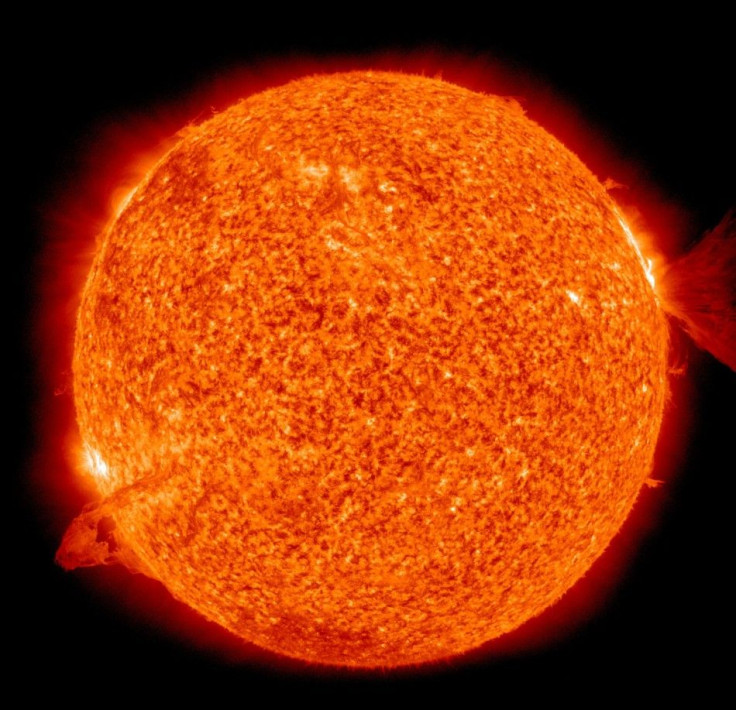Rare Drop in Sunspot Activity Could Cause Little Ice Age

The sun is most likely going into hibernation as the latest unusual solar readings, including fading sunspots and weakening magnetic activity near the poles suggest that we are headed towards a solar event that hasn't happened in hundreds of years, according to new data released Tuesday at the annual meeting of the solar physics division of the American Astronomical Society in Las Cruces, New Mexico.
Even though the Sun has been active recently as it heads towards solar maximum in 2013, there are three lines of evidence including a missing jet stream in the solar interior, fading sunspots on the sun's visible surface, and changes in the corona and near the poles suggest that the next 11-year-long solar cycle will be far quieter than the current one or it may not even happen.
There are some scientists at the conference who said the current findings from the studies mean that we are at the beginning of a Maunder Minimum, a 70-year period that began around 1645 when hardly any sunspots were observed.
This decline in sunspots coincided with below-normal temperatures, in a climate period known as the Little Ice Age that struck Europe and North America, where temperatures dropped by 1.8 to 2.7 degrees Fahrenheit (1-1.5 degrees Celsius). But scientists warn that the temperature change due to a decline in sunspot activity would likely be minimal and not enough to compensate for global warming.
Sunspots were first observed by Chinese astronomers in 800 B.C., systematic observations of sunspots through the telescope started around 1600. In 1843, a German astronomer Samuel Schawbe first discovered that the number of sunspots wax and wane in a cyclic fashion with an 11-year periodicity. This is called the sunspot cycle or the solar cycle.
We're now in Solar Cycle 24, heading for a maximum in the sun's activity sometime in 2013. The new studies noticed a long-term trend of sunspot weakening, and if the trend continues, the sun's magnetic field won't be strong enough to produce sunspots during Solar Cycle 25.
“The flow for Cycle 25 should have appeared in 2008 or 2009 but it has not and we see no sign of it. This indicates that the start of Cycle 25 may be delayed to 2021 or 2022, with a minimum great that what we just experienced, or may not happen at all,” said Frank Hill, the associate director of the National Solar Observatory's Solar Synoptic Network.
The 2008 and 2009 period was unusual in that all of the sunspots disappeared, a situation that had not occurred for nearly a century.
The Maunder Minimum, a 70-year period with virtually no sunspots, coincided with the Little Ice Age, a period of unusual cold. But it has not been proven whether there is a causal connection between low sunspot activity and cold winters as that period also coincided with an upswing in volcanic emissions, which are known more definitely to contribute to global cooling.
So astronomers will be watching the sun carefully over the next couple of years to find out if the activity on the Sun contributes to climate change on Earth.
READ: Solar Activity Drop: Will It Lead to Little Ice Age II?
© Copyright IBTimes 2024. All rights reserved.





















